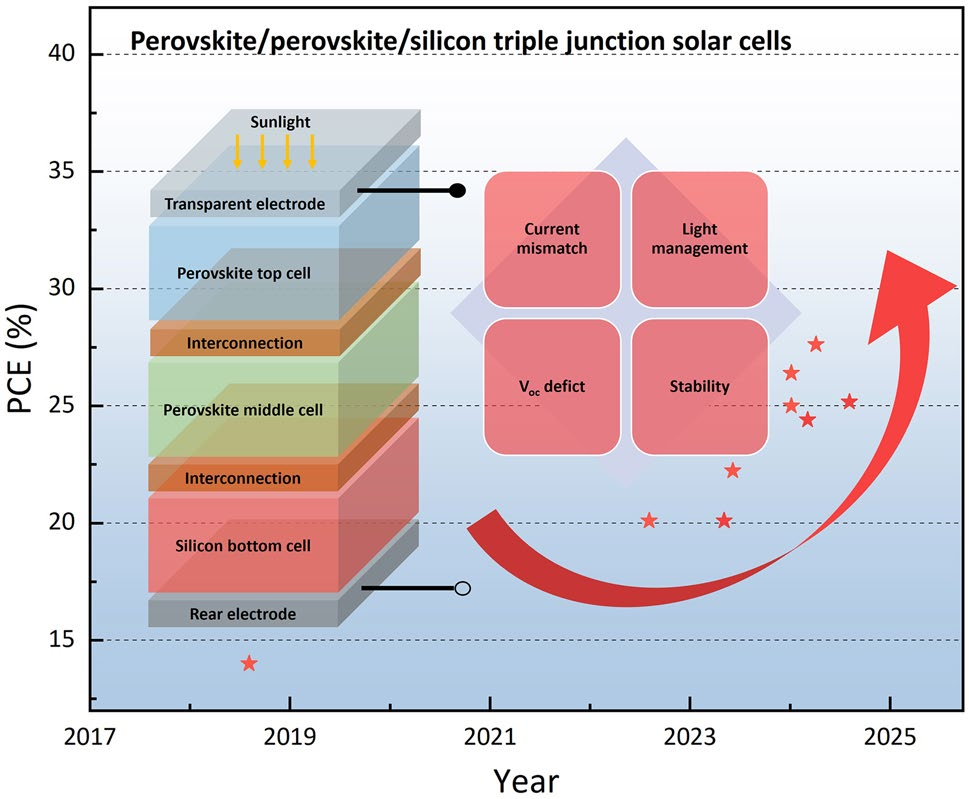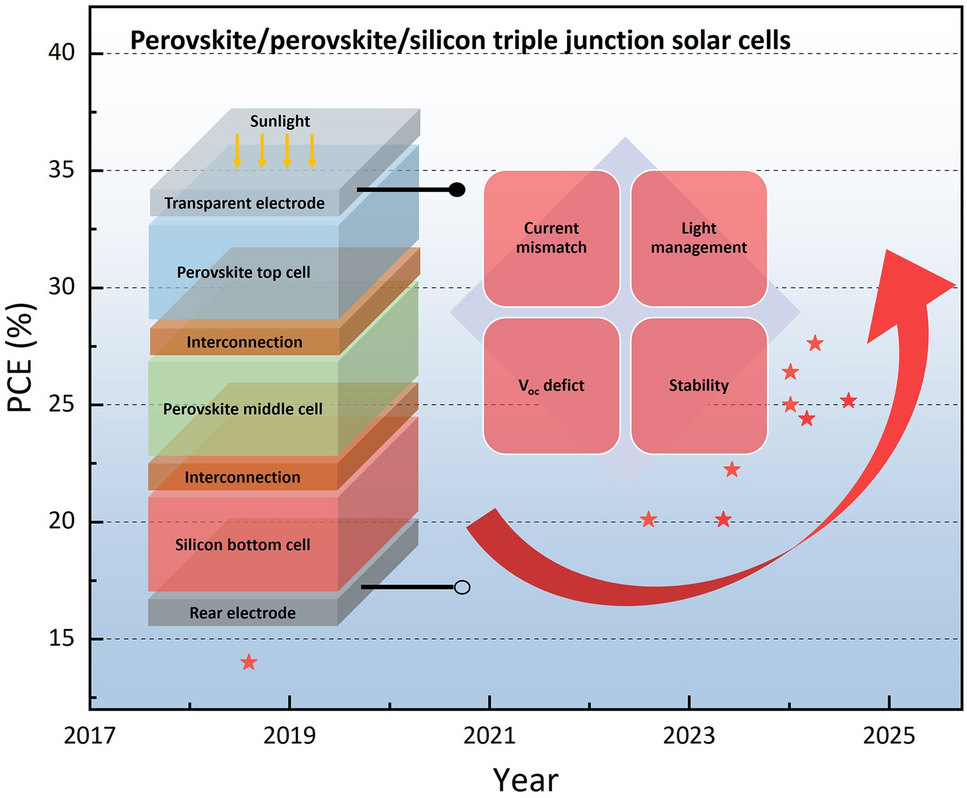Monolithic Perovskite/Perovskite/Silicon Triple-Junction Solar Cells: Fundamentals, Progress, and Prospects

A research team led by Leiping Duan, Cheng Xu, and Jianghui Zheng has published a comprehensive review in Nano-Micro Letters that examines the fundamentals, recent progress, and future prospects of monolithic perovskite/perovskite/silicon triple-junction solar cells (PSTJSCs). With crystalline silicon (c-Si) solar cells approaching their theoretical efficiency limit of 29.4%, multi-junction strategies are regarded as a crucial pathway to further raise power conversion efficiency (PCE). Among them, perovskite-based tandems stand out for their tunable bandgaps, low-cost fabrication, and excellent optoelectronic properties.
Why PSTJSCs Matter
- Efficiency Potential: Theoretical limits suggest PCEs beyond 49% when optimized bandgap combinations are employed, surpassing perovskite/silicon double-junctions.
- Integration Benefits: Monolithic architectures minimize cost and complexity, while enabling seamless compatibility with existing c-Si PV module infrastructure.
- Rapid Progress: Since the first proof-of-concept in 2018 with 14% efficiency, certified PCEs have climbed above 27% in 2024, reflecting remarkable advances in device engineering.
Key Challenges
- Current Mismatch: Middle subcells with bandgaps above the optimal 1.44 eV limit photocurrent, restricting overall efficiency.
- Open-Circuit Voltage Deficit: Wide-bandgap perovskites suffer from high defect densities and interfacial mismatches, resulting in large VOC losses.
- Phase Segregation: Mixed halide compositions are prone to light-induced segregation, undermining photovoltage and operational stability.
- Stability: While single-junction perovskites have made strides in durability, triple-junction devices remain vulnerable under long-term illumination and environmental stress.
Design and Optimization Strategies
- Bandgap Engineering: Tailoring halide composition, alloying with cations, and exploring Sn-based perovskites help tune absorber layers for current balance.
- Interface and Interlayer Engineering: Transparent conductive oxides (ITO/IZO) and ultrathin metal layers serve as effective interconnection layers, while passivation techniques mitigate recombination.
- Light Management: Surface texturing of silicon, nanostructured designs, and improved deposition methods enhance photon harvesting.
- Stability Solutions: Additive engineering, crystallinity control, and encapsulation strategies are being pursued to suppress halide migration and extend device lifetime.
Future Outlook
Research on PSTJSCs is shifting from incremental efficiency gains to holistic approaches that integrate bandgap tunability, defect passivation, and stability optimization. Moving forward, emphasis will be placed on developing robust wide-bandgap perovskites with minimized VOC deficits, scalable deposition methods compatible with textured silicon, and encapsulation systems capable of ensuring decades-long stability. By bridging molecular design with device-level architecture, PSTJSCs are positioned to push photovoltaic performance into new frontiers, offering a realistic pathway toward affordable, sustainable, and ultra-efficient solar energy.
Follow the Topic
-
Nano-Micro Letters

Nano-Micro Letters is a peer-reviewed, international, interdisciplinary and open-access journal that focus on science, experiments, engineering, technologies and applications of nano- or microscale structure and system in physics, chemistry, biology, material science, and pharmacy.






Please sign in or register for FREE
If you are a registered user on Research Communities by Springer Nature, please sign in